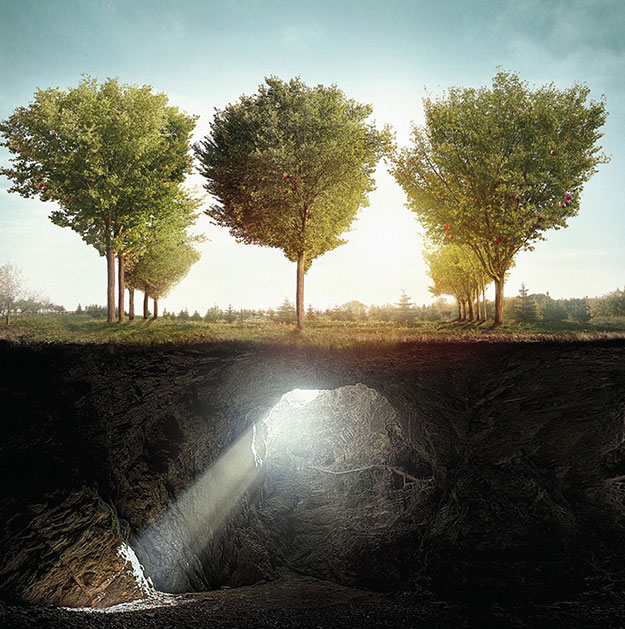Winter 2016: Energy Evolution
From carbon dioxide conversion to landfill mining, researchers at UTA are seeking viable alternative energy options.
Skip to content. Skip to main navigation.
From carbon dioxide conversion to landfill mining, researchers at UTA are seeking viable alternative energy options.
Found in everything from space shuttles to dental fillings, composite materials have thoroughly infiltrated modern society. But their potential is still greatly untapped, offering researchers ample opportunity for discovery.
Within the particle showers created at the Large Hadron Collider, answers to some of the universe’s mysteries are waiting.
Model systems like pigeons can help illuminate our own evolutionary and genomic history.
UT Arlington's tiny windmills are bringing renewable energy to a whole new scale.
The stability of our highways, pipelines, and even manholes is reaching a breaking point.
Scientists believe they have discovered a subatomic particle that is crucial to understanding the universe.
UT Arlington researchers unlock clues to the human body’s most mysterious and complex organ.
UT Arlington researchers probe the hidden world of microbes in search of renewable energy sources.
Wounded soldiers are benefiting from Robert Gatchel’s program that combines physical rehabilitation with treatment for post-traumatic stress disorder.
Tiny sensors implanted in the body show promise in combating acid reflux disease, pain and other health problems.
Nanotechnology researchers pursue hybrid silicon chips with life-saving potential.
Biomedical engineers combat diseases with procedures that are painless to patients.

Underground freight transportation offers a quiet, safe alternative to truck traffic
Heavy truck traffic is a common sight on the nation's highways, one that poses potential hazards to drivers every day. But Mo Najafi may have a solution. The civil engineering professor and his team received a highly competitive, $1.2 million research grant from the Texas Department of Transportation to investigate the effectiveness of building underground freight transportation (UFT) between busy freight routes in the state, such as those from the port of Houston to Dallas and the Mexican border in Laredo, Texas.
"This is a quiet, safe, and secure mode of transportation that causes minimal impact to social life and the environment," says Dr. Najafi, who also serves as director of the University's Center for Underground Infrastructure Research and Education (CUIRE). "In fact, it reduces traffic on the road and thereby reduces fuel consumption, accidents, and damage to pavement and bridges."
With UFT systems, capsules carry freight through pipelines between terminals. Najafi's team–which includes civil engineering Professor Sia Ardekani and Senior Lecturer Mohsen Shahandashti–believes their system could use an electric source in the form of linear induction motors connected to individual capsules for the propulsion system. This setup would incorporate new trenchless technologies that offer minimum surface disturbance during construction.
The size of the freight system would depend on what's being transported; possible items could include everything from 40-foot-long containers to small crates and pallets.
The project will be completed in three phases over three years. Researchers will conduct an initial feasibility study, then build a garage-sized, small-scale test model at the CUIRE facility at the Civil Engineering Lab Building. The final phase may include constructing a two- to three-mile stretch of underground freight tunnel in Houston or Laredo.
"Dr. Najafi is a nationally known expert on underground infrastructure construction and maintenance, critical to urban living and sustainability," says Khosrow Behbehani, dean of the College of Engineering. "The proposed project is an innovative application of his expertise and the techniques he has developed to address a real need of transporting goods in urban settings efficiently and in an environmentally sound way."
Photograph by C.J. Burton/Corbis